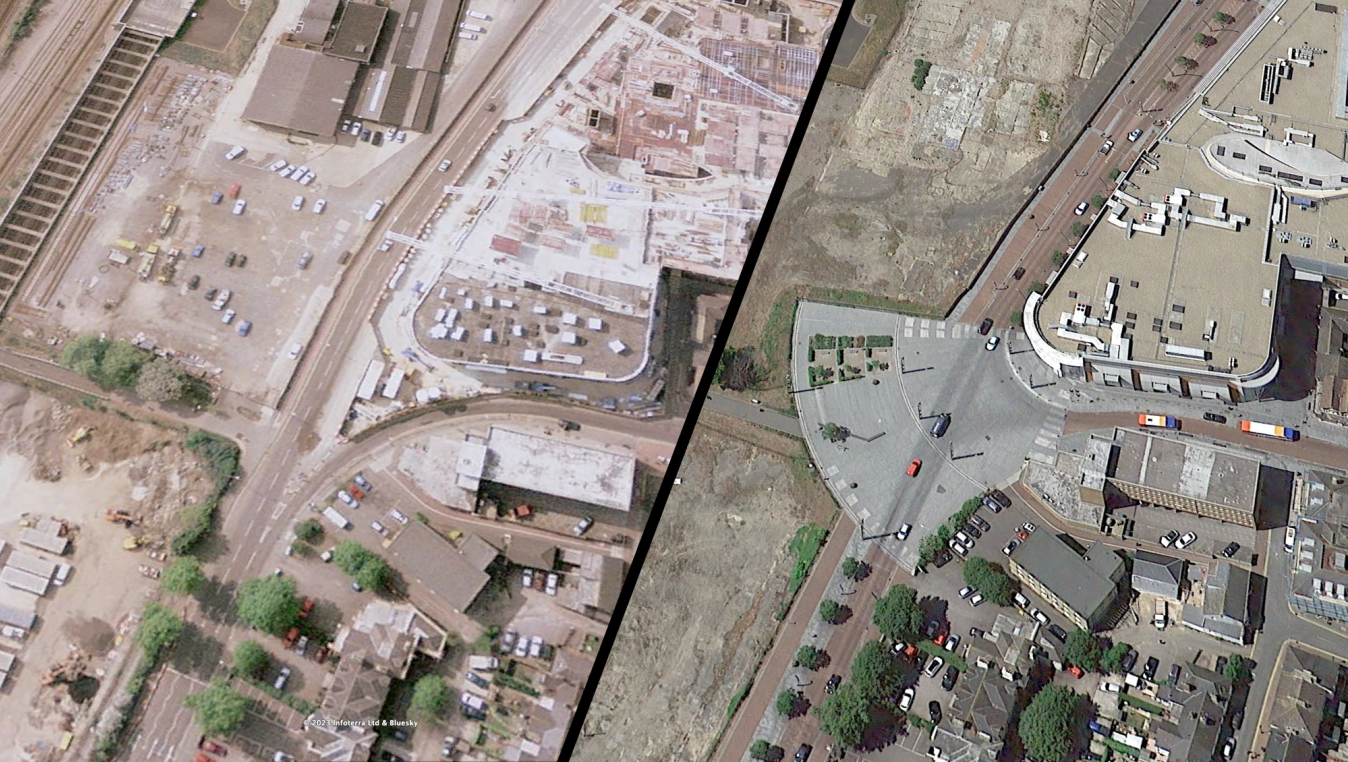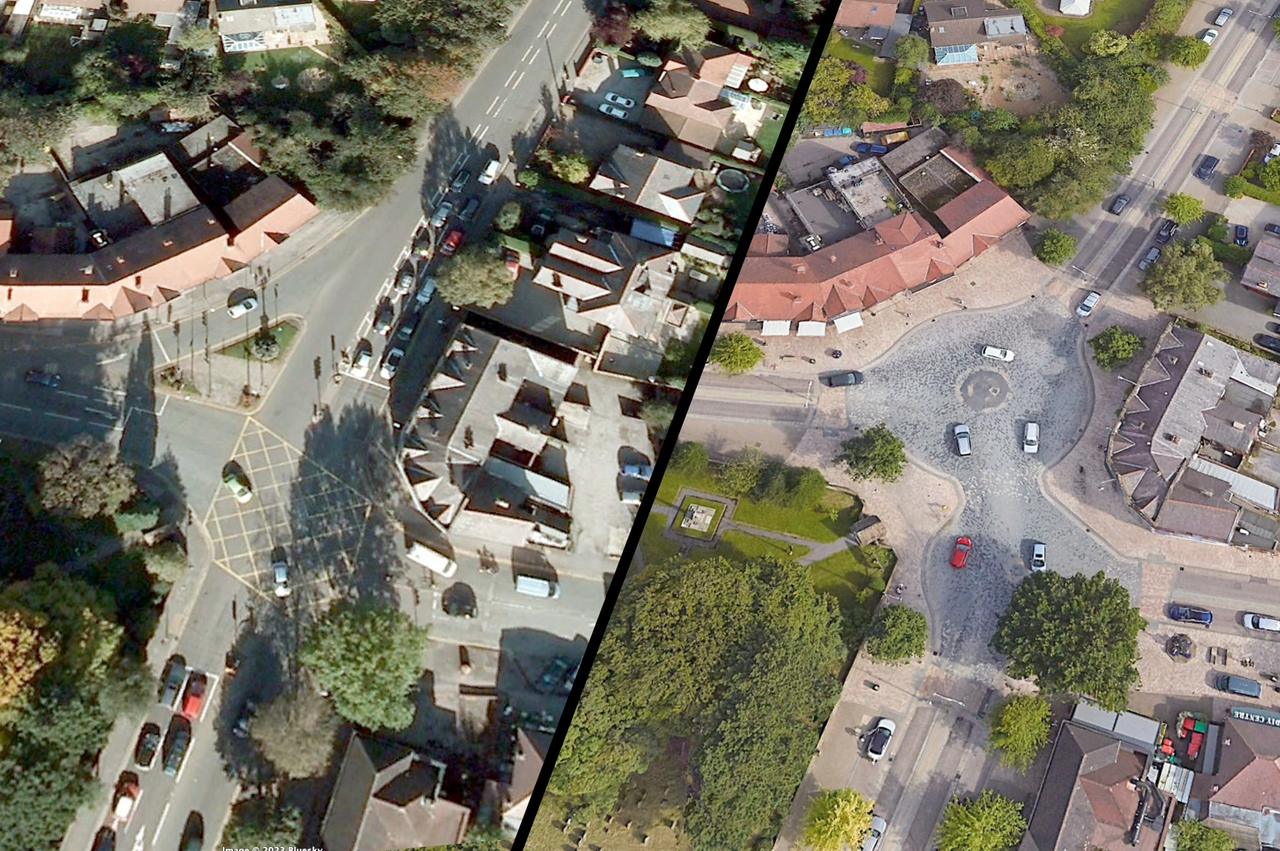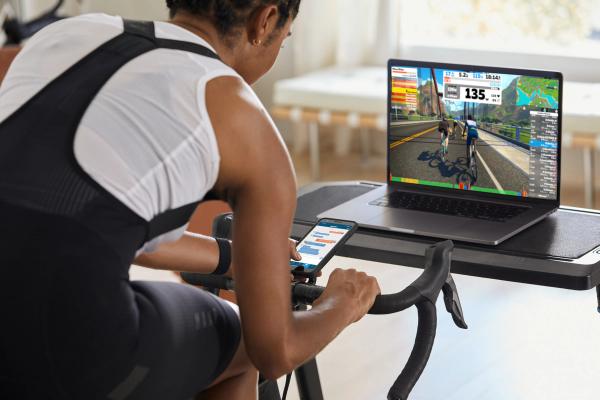Anarchy, utopia, and failure: The rise and fall of the shared space movement
When road designers removed traffic lights and signals, they thought people would be nice to each other. Really, it just showed us how drivers use their cars to dominate cyclists and other road users
James Howell-Jones
Junior Writer
Left: ©Bluesky/Google 2010 | Right: ©Google 2022
What are shared spaces, and why didn't they catch on?
Since cars took over our cities in the early 1900s, road safety has been led by one basic idea: segregate cars, pedestrians and cyclists, then control every movement with traffic lights, signs, curbs and barriers. But is that the safest way to do things?
In the noughties, full of optimism, planners tried a new idea. They removed traffic lights, signs and road markings, leaving open, ambiguous spaces for cars, cyclists and pedestrians. The theory was that without traffic controls, people would use judgement and decency to pass each other safely.
For a few years, shared spaces were a hit, and soon they were spreading throughout the world. Look at a lot of town centres in Europe and you can still see the remnants of them – levelled-off curbs, brick-tiled streets, decorative floor markings.
In most cases, though, they’ve now been restored to ‘traditional’ segregated spaces, with bollards, traffic lights and barriers hastily bolted on top. That’s because, ultimately, shared spaces failed.
The system was supposed to prove that, given freedom and responsibility, people become decent, generous human beings, but ultimately, it did the opposite. Shared spaces demonstrated that when you put everyone on a level playing field and give people freedom, drivers get a whiff of power and, very naturally, they exploit it.
What are shared space streets?

© GCN
A shared space near the GCN office in Bath, UK
Shared space streets are streets without signs, road markings, traffic lights and segregations. Instead of highly structured environments, junctions look more like grand plazas, with decorative floor designs, level ground, and no clear indication of how to walk, drive or cycle across them.
“Who has the right of way?” shared space pioneer and urban planner, the late Hans Monderman asked the Project for Public Spaces. “I don't care. People here have to find their own way, negotiate for themselves, use their own brains.”
The theory with shared streets was that if you force people to think, they drive safer.
“When you don’t exactly know who has right of way, you tend to seek eye contact with other road users. You automatically reduce your speed, you have contact with other people and you take greater care.”
Beyond simply being more careful, Monderman believed that, given freedom, people would begin to see each other as human beings, and with empathy, let other road users pass.
“We're losing our capacity for socially responsible behaviour”, he said. “The greater the number of prescriptions, the more people's sense of personal responsibility dwindles.”
With shared spaces, Monderman would enable “a transfer of power and responsibility from the state to the individual and the community".
Based on this philosophy, in the 1990s and early 2000s, as a traffic engineer and planner, Monderman stripped out road paraphernalia in over 100 towns and villages in his home country, the Netherlands. He wanted the drivers to feel they were passing through real, individual places, and used landscaping, lighting, public art and local materials to achieve it.
Sure enough, it made people drive slower, and road casualty statistics improved. And yet, because shared space junctions were more dynamic than traffic lights, traffic flow rate increased.
By the turn of the millennium, the rest of the world had noticed. In Britain especially, there was a lot of enthusiasm for shared space streets. Architect Ben Hamilton-Baillie led the charge. He was determined to turn Monderman’s experimental ideas into a new blueprint for British towns and cities.

Left: ©Bluesky/Google 2010 | Right: ©Google 2022
Before and after, Poynton, UK
Town centres began changing. Where once there were claustrophobic barriers penning in pedestrians and a mess of signs and lanes for drivers and cyclists, Hamilton-Baillie built broad, open spaces.
He used subtly indicative road markings to nudge traffic in the right direction. Zebra crossings were replaced with ‘courtesy crossings’ – strips of differing colours or textures that suggested good places to cross the road; and he used simple textural distinctions to delineate the road and the pavement. Wherever they installed, shared spaces seemed to make towns more open, attractive, prosperous and safe.
The system wasn’t just for sleepy villages. For Hamilton-Baillie, shared space design was a pragmatic way to deal with the large numbers of cars passing through British towns and cities, and an end to what he saw as a futile ‘pro-car / anti-car’ debate.
“Cars and trucks are part of our social and economic structure, for better or worse,” he told Architecture Norway. “Shared space allows traffic to be integrated into the dynamics and social structure of cities. Rather than fighting the car, shared space principles simply allow the car to be used more efficiently in towns and cities.”

Left: ©Infoterra Ltd/Google | Right: ©Google 2023
Elwick Square in Ashford turned a busy junction into an open plaza
Many predicted that this was the beginning of a revolution. In 2011, the British Government’s Department of Transport issued guidance on shared space, giving step-by-step instructions for local authorities looking to transform their streets. The Guardian bid 'A farewell to pavements' and the Evening Standard declared ‘Shared space is the future for London’s roads’.
Mounting criticism
However, all the while, an opposition was forming.
In the first instance, it was a debate about inclusivity. Shared space designers had insisted that by putting in textured surfaces and a few traditional crossings, shared streets were safe and easy to navigate for blind people. Most blind people disagreed, saying the ambiguity of shared spaces was frightening and dangerous.
A number of campaigns led by visual impairment charities gained traction, calling for an end to shared spaces. With such glaring accessibility issues, shared spaces were starting to lose their sparkle.

© GCN
Textured surfaces, designed to make blind people feel safe, were insufficient
Really though, the problems with shared spaces affected far more than the 340,000 blind people in the UK. In 2011, researchers visited one of the most celebrated examples of shared space design in Ashford, Kent to re-evaluate the success of the scheme.
On-the-ground surveys and video analysis showed that, in reality, cars were king in shared spaces. The research revealed that in 72% of cases, pedestrians initially gave way to vehicles, and that whilst pedestrians treated the ‘courtesy crossings’ like zebra crossings, “most drivers did not treat them this way".
Most disconcertingly, the video analysis revealed that 17% of pedestrians felt the need to run whilst crossing the road – hardly the mark of a safe, equally shared space between all road users.

© GCN
Cars don't see paved 'desire lines' or 'courtesy crossings' as a reason to give way
Then, in 2015, a nationwide survey revealed that over a third of people refused to walk through shared space streets, taking other routes instead. The author, Lord Holmes, called for an “immediate moratorium on shared space schemes”.
“Pedestrians constantly reported feeling scared and unsafe, indeed a shocking 35 per cent said they ‘would go out of their way’ to avoid a shared space. Pedestrians felt intimidated and bullied by cars and the issue of crossings is particularly problematic,” Holmes wrote.
Cyclists had almost universally negative feedback about shared space streets and junctions. They reported aggression and bullying from drivers, who used the heft of their vehicles to muscle cyclists off the road and onto the pavement.
One cyclist said, “‘sharing’ is NEVER on equal terms – as a confident but anxious cyclist, I usually ‘win’ the sharing ‘transactions’, but if a particular driver doesn't want to yield, they won't. These junctions are entirely unsuitable for cyclists who are not confident, thus they protect the strong not the weak.”
Rather than make drivers hyper-aware, good citizens, the ambiguity made nervous drivers more stressed and erratic, and gave confident drivers a means to bully other road users into submission.
The report found: “Drivers were aggressive and due to the lack of defined space for cycling attempt to bully cyclists into where pedestrians were right at the edge. Motorists were travelling fast and at junctions with no defined priority used size and power to bully other to give way even if other was already in junction."
One driver quoted in the survey report added: “If as a driver you stop to let pedestrians across you are often abused by other drivers. I stop, but the cars coming the other way don't, so pedestrians don't know whether to cross or not, or they cross and then have to run. Elderly and disabled are too scared to cross as they can't move fast enough.”
Misguided optimism
Hans Monderman believed that if you hand people a sense of responsibility, they use their brains, even their hearts. He believed that, given control, people would be filled with a sense of community. Unfortunately, the shared space movement demonstrated that when there is a power imbalance, that’s simply not the case.
Amid mounting evidence that shared space schemes weren’t all they were cracked up to be, the government put their shared spaces scheme on ‘pause’ in 2018, to review the facts.
That, more or less, is where the shared streets movement ended, in the United Kingdom at least. Hans Monderman, the first real pioneer of shared spaces, died of cancer in 2008 at just 62, and Hamilton-Baillie, the man who popularised the movement, also died of cancer at 63. With his death in 2019, the movement lost one of its few remaining voices, and the ‘pause’ on the British Government’s shared space scheme has remained in place ever since.
Shared spaces failed because there are so many power imbalances in a shared street. There is the pedestrian, who is slow moving and completely unprotected. Then, there is the cyclist, who has some speed and a few kilograms of bicycle beneath them. Then you’ve got drivers, who balance the life and death of other road users between their throttle and brake pedal. That power imbalance led to spaces dominated by cars.
Shared spaces were supposed to show that we’re all nice people ‘deep down’. In reality, it showed that if you give people a level playing field and trust our sense of community, you end up with an environment ruled by the most powerful.
For a truly ‘equal’ road network, we need equity, not equality. We need rules and designs that control the most powerful road users, and protects and empowers the most vulnerable.







.jpg?w=600&auto=format)


